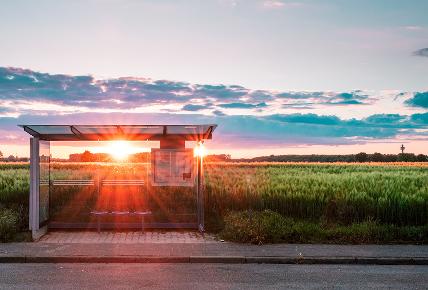




Mobility as a Service is about simplifying customers' everyday lives. By using smart interfaces, collecting and packaging different transport solutions based on shared resources and making it easy for the customer not to own a car. Depending on which target group you are addressing and in which context you work within, the digital interfaces, the design of the transport services and the business models look differently. Various services can be more or less integrated when it comes to travel planning, booking, payment, tickets, as well as pricing and packaging in order to create a seamless experience.

Within Consumer MaaS, users and customers are the same thing. It is often a relatively broad service that targets customers in urban areas with, for example, public transport, taxis, car pools and electric scooters. The challenge is to find a business model where the customer sees enough added value in the packaging of already existing individual services. The goal is also that the transport providers consider themselves to benefit from being present via this interface, compared to their own channels. This applies not least to public transport. Examples of services in the Nordic region; Travis, Whim, RuterPilot and Min Rejseplan.
Real estate MaaS are mobility services that are integrated with your real estate (house, flat, office) in one way or another. The user is the resident and the customer or co-financier is the property owner. The benefit for the property owner is to be able to offer more attractive and sustainable mobility, reduce the number of parking spaces and increase the value of the property. The challenges are that solutions have mainly been applicable to new constructions. Examples of relevant services are EC2B or Volvo On-demand.


Employer MaaS refers to MaaS services that address employers to facilitate business travel or travel to and from the workplace. Common to these services is that the employee is the user and the employer is the customer, i.e. the person who pays for the services. The benefit for the employer is to improve its sustainability profile, become a more attractive workplace and save costs in travel and administration. Challenges are ingrained systems, tax legislation, "do not touch my company car problem", and that the company does not have time to prioritize this issue. Examples of relevant services and pilots; EC2B, Scania Go, Tjänsteresa, LIMA and SmartResenär.
Rural MaaS is adapted for non-urban environments, where partly the travel needs are different and partly the solutions aim more at accessibility than at sustainability. Here, public actors probably also need to be involved and finance in the longer term if services are to be available to the citizen. Examples of transport services are public transport, on-demand, public car pool, carpooling, P2P ("borrow your neighbour's car"). The biggest challenges are whether the public sector is prepared to finance these solutions and whether that is the role of the region or the municipalities. Examples of relevant projects are; KomILand and Kollakoll.


Tourist MaaS refers to solutions for temporary visitors in a region or town. It is often a barrier for temporary visitors to use public transport or other services based on shared resources. Downloading one or more apps for a short stay is perceived as "unnecessary". Easy accessibility for temporary visitors is beneficial for both the users, the tourism industry and the city.
© Copyright Mobilityservice.se